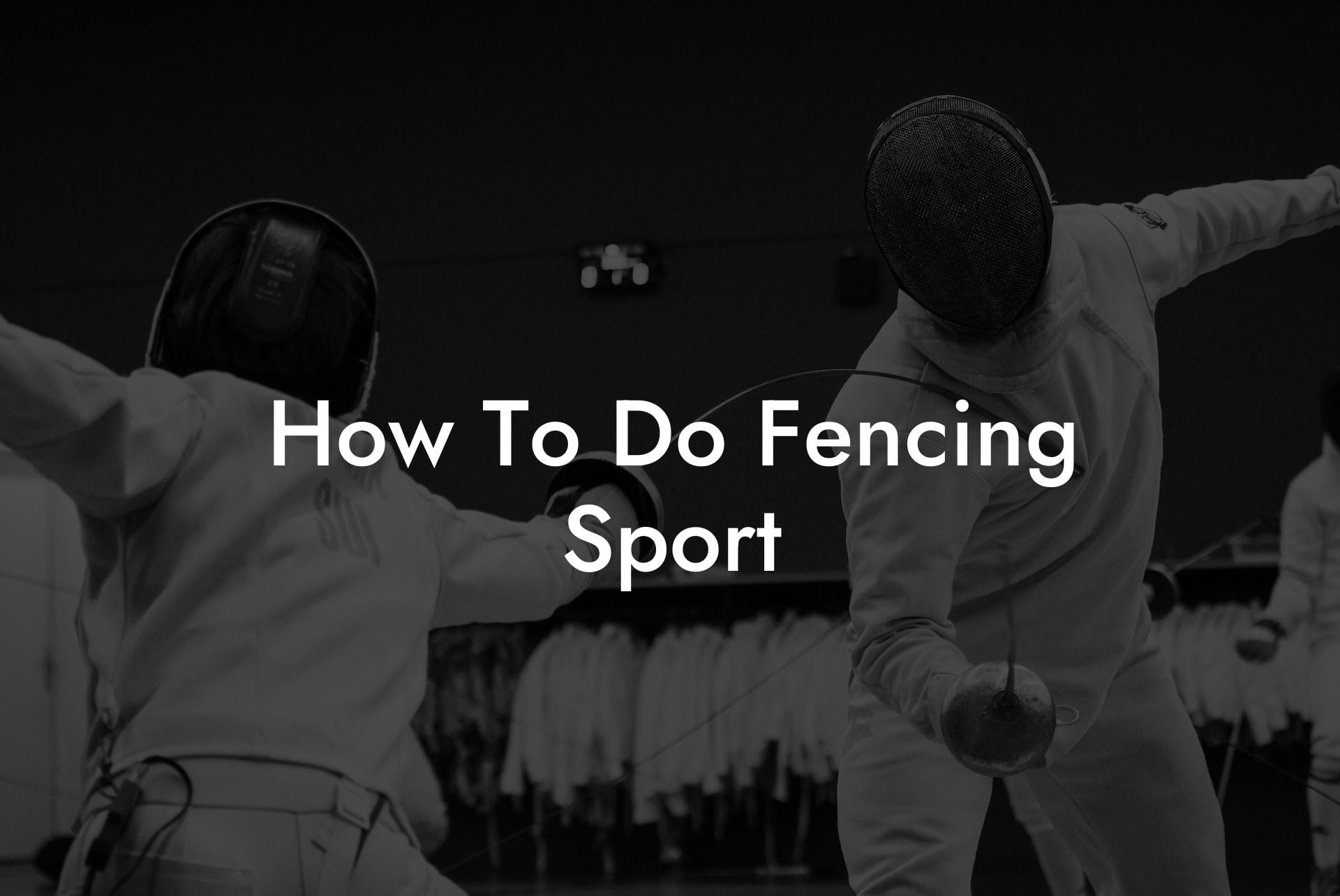Have you ever found yourself intrigued by the elegant and fast-paced sport of fencing, but unsure of where to start? Well, worry no more! With the right information and guidance, you'll be on your way to mastering the art of fencing in no time. In this comprehensive guide, we will break down everything you need to know about how to do fencing sport, from the basic moves to choosing your equipment.
How To Do Fencing Sport Table of Contents
Understanding the Basics of Fencing
Fencing is a combat sport that involves three distinct disciplines: foil, épée, and sabre. Each discipline has its own set of rules, techniques, and equipment. Therefore, the first step to becoming a successful fencer is understanding the fundamental differences and deciding which discipline aligns with your interests and goals.
Foil
Foil is the most common discipline for beginners. It is known for its intricate footwork and precise offensive moves, focusing on skillful technique, timing, and tactics. Scoring in foil is limited to the torso, which is considered the target area.
Épée
Épée is similar to foil but with a heavier weapon and larger target area: the entire body. This discipline encourages more aggressive fencing and is perfect for those who prefer a strategic and calculated approach, allowing a wider range of movements and attacks.
Sabre
Sabre is the fastest and most aggressive of the three disciplines. Using a cutting weapon rather than a thrusting one, the target area expands to include the upper body, from the waist up. Speed and timing are crucial in sabre, making it suitable for those who enjoy a high-energy, exhilarating experience.
Learning the Basic Moves and Techniques
Regardless of the discipline you choose, there are some common moves and techniques every fencer needs to master. These include:
On Guard Stance
The on-guard stance is the foundation of all fencing moves. It ensures proper balance and readiness for both offensive and defensive actions.
- Stand with feet shoulder-width apart, with your dominant foot forward and the rear foot perpendicular to it.
- Bend your knees, keeping your weight centered and body slightly leaning forward.
- Hold your weapon with a firm yet relaxed grip, extending your dominant arm while maintaining a slight bend at the elbow.
- Keep your non-dominant hand behind your back or near your hip for counterbalance.
Footwork
Good footwork is crucial for maintaining balance and control during a fencing match. The two main footwork actions in fencing are the advance and the retreat.
- Advance: Move your front foot forward, followed by bringing the rear foot to its original position, maintaining the same distance between both feet.
- Retreat: Move your rear foot backward, followed by moving the front foot to maintain the same distance between both feet.
Practice your footwork regularly to ensure smooth, agile movements on the fencing strip.
Attacks and Defensive Moves
In fencing, there are two primary attacks: the lunge and the fleche.
- Lunge: Begin with the on-guard stance, then explosively extend your front leg, kicking off the ground with the rear foot, reaching forward with your weapon.
- Fleche: This is an even more aggressive attack, starting with the on-guard stance, take a step forward, push off, and rapidly leap towards your opponent, weapon extended.
Defense moves consist of parries and ripostes, using your weapon to deflect or counter your opponent's attack.
How To Do Fencing Sport Example:
Imagine a foil fencing match where two fencers face off in their on-guard stances. Fencer A advances towards Fencer B, attempting to score with a lunge. Fencer B reacts quickly with a parry, deflecting Fencer A's attack, and immediately ripostes with an attack of their own, successfully scoring a point.
By understanding the basics of fencing and mastering the essential moves and techniques, you will be well on your way to becoming an accomplished and skilled fencer. The journey to mastering the art of fencing is both challenging and rewarding. So don't wait any longer – explore other informative guides on Anchorage Fencing Club, and share this article to inspire your friends to join you in the exhilarating world of fencing!













